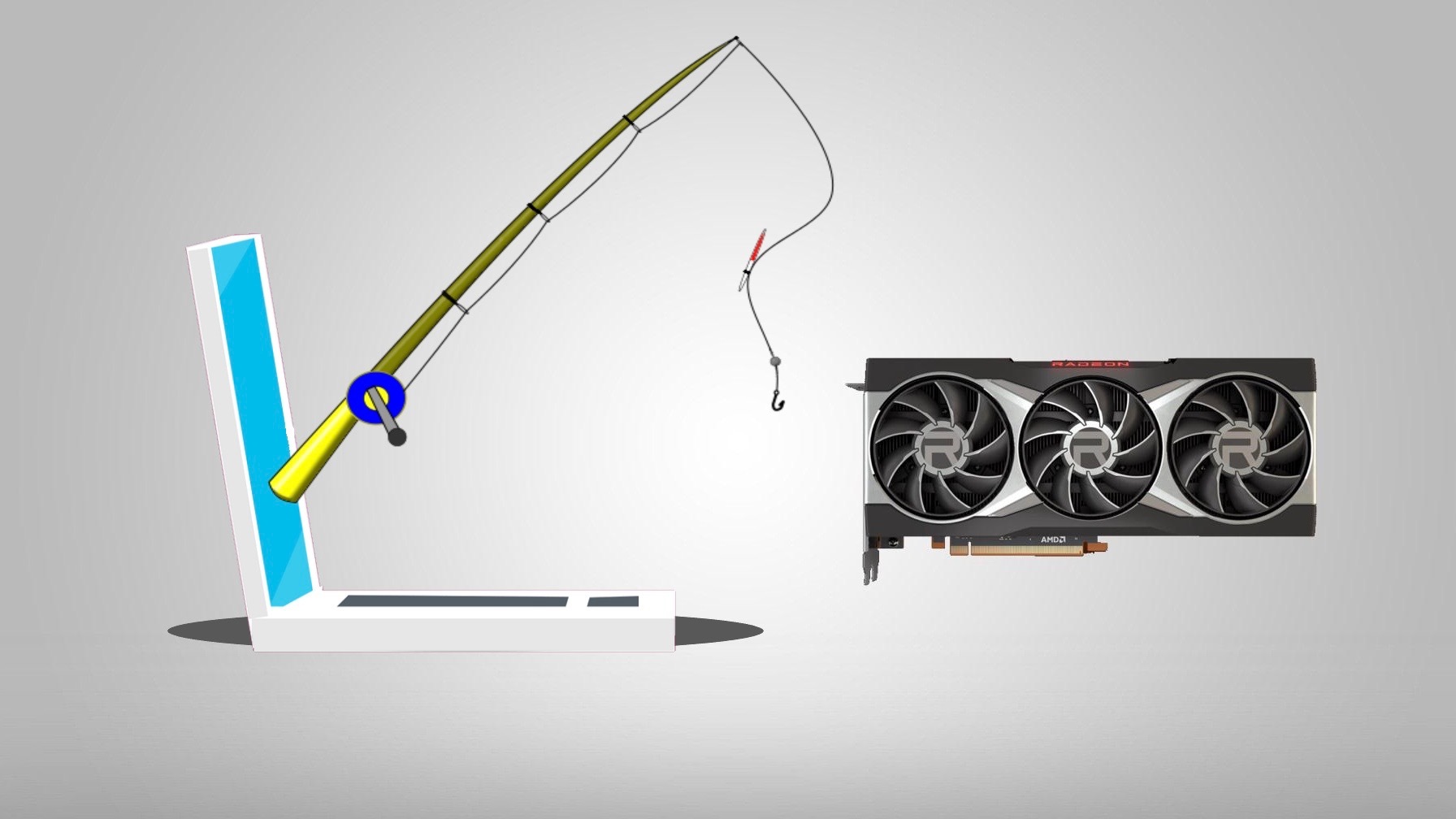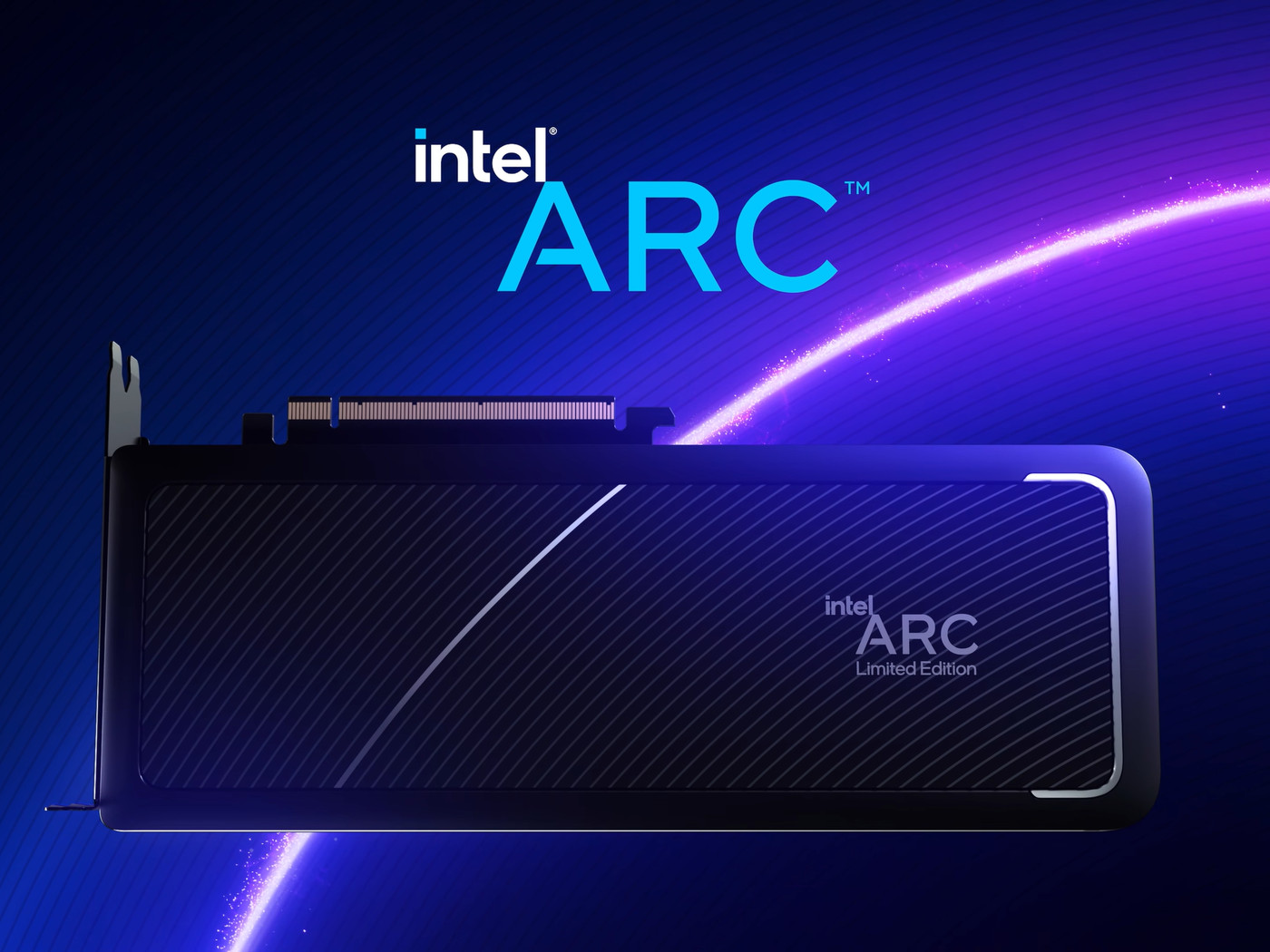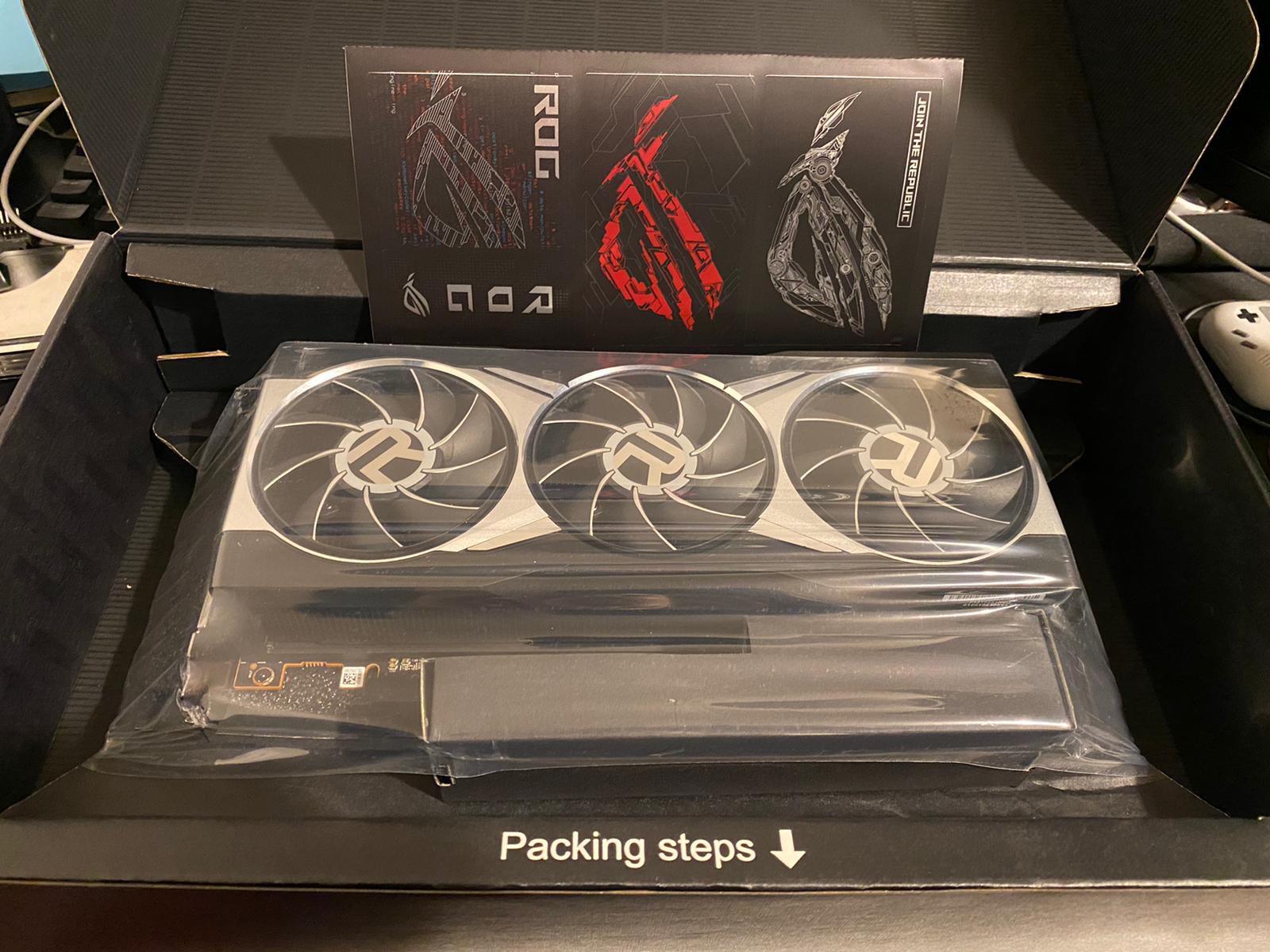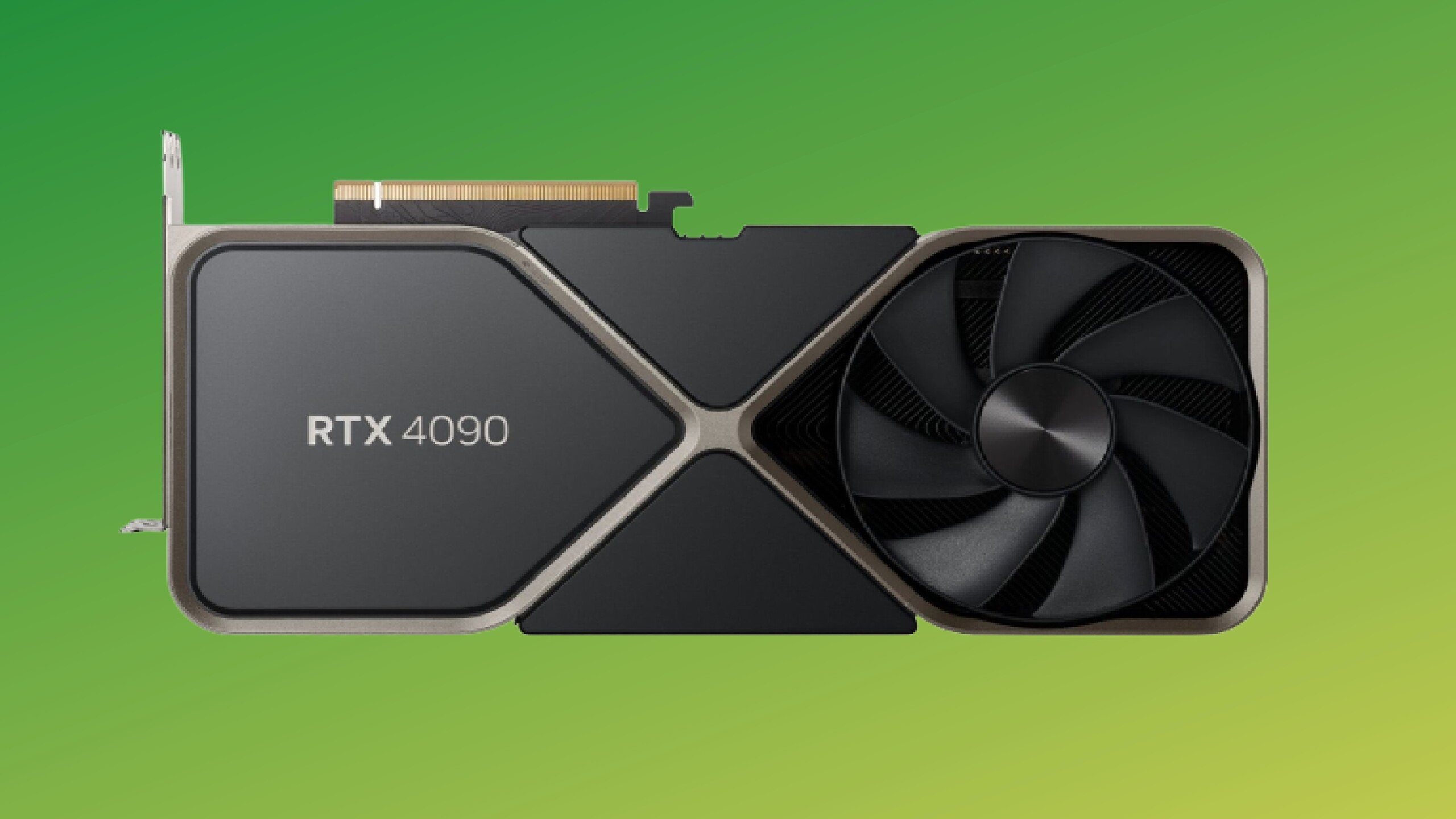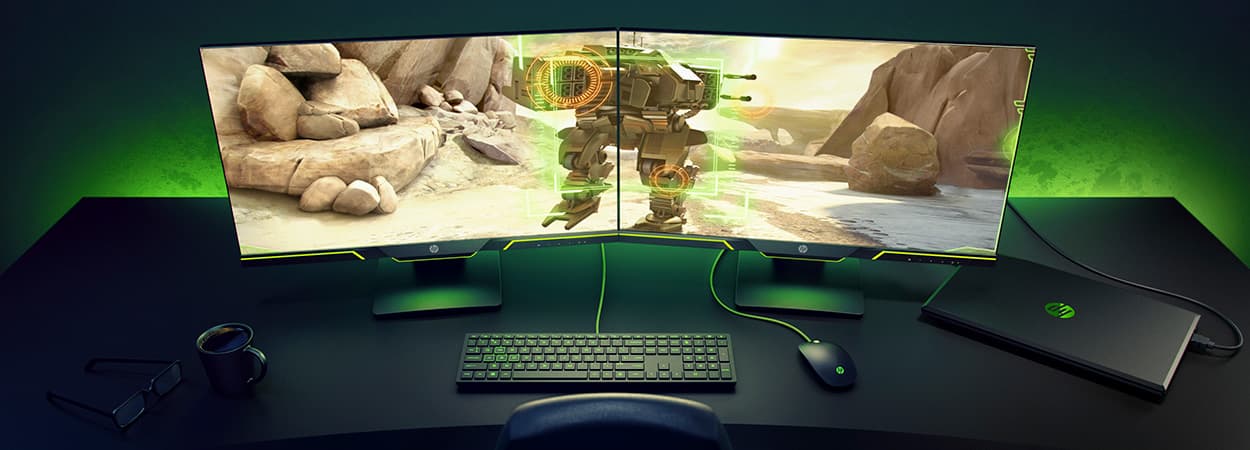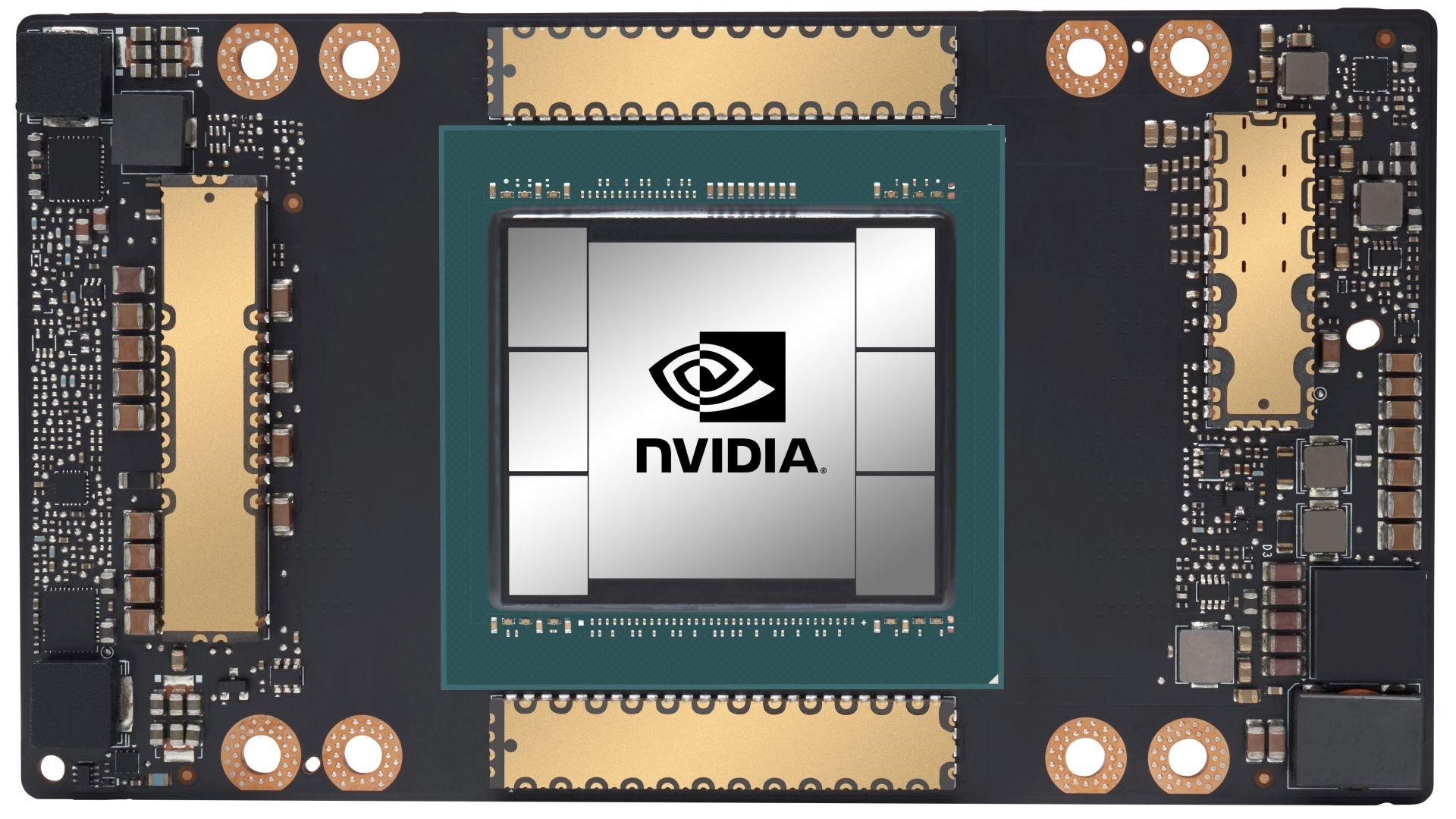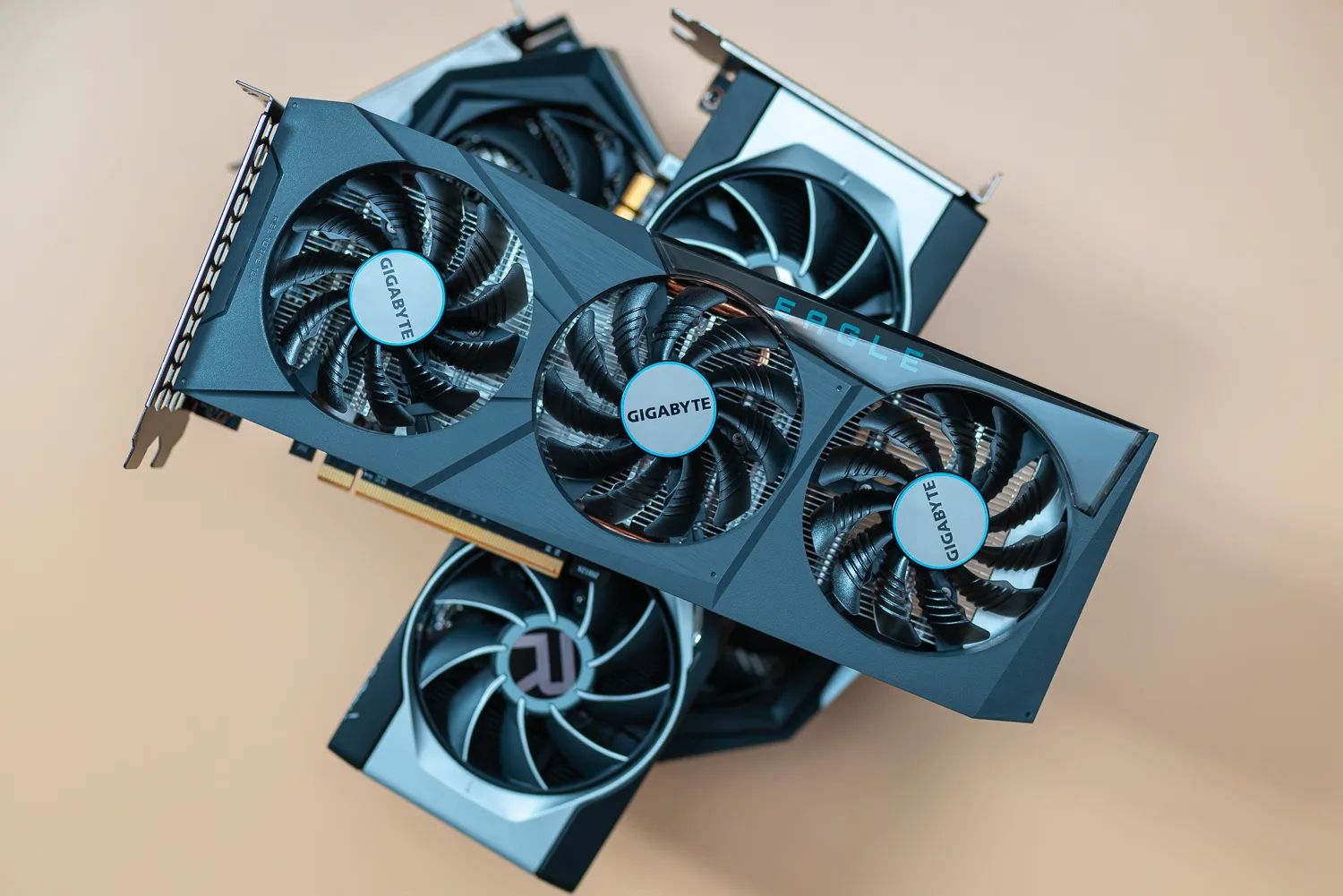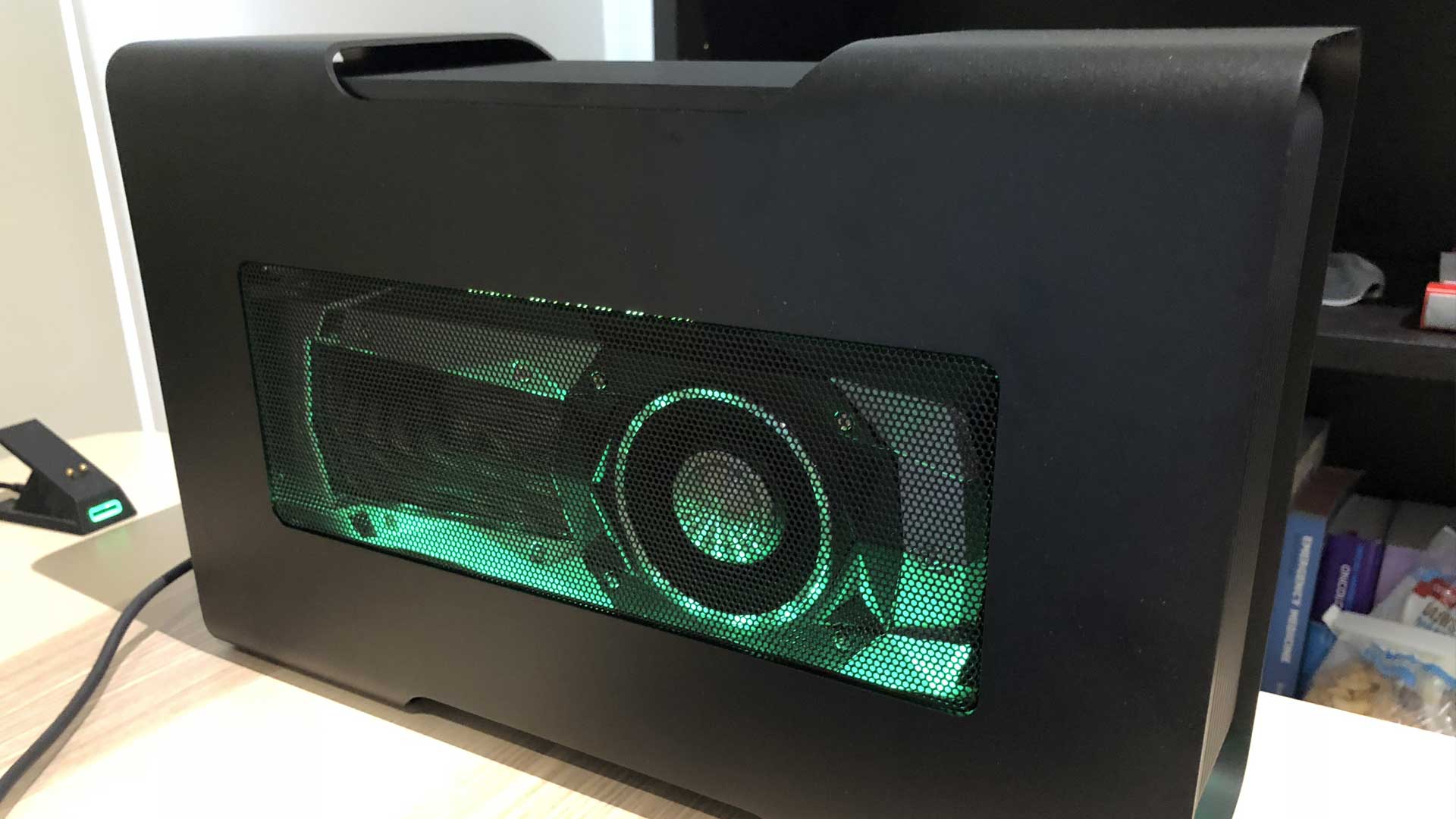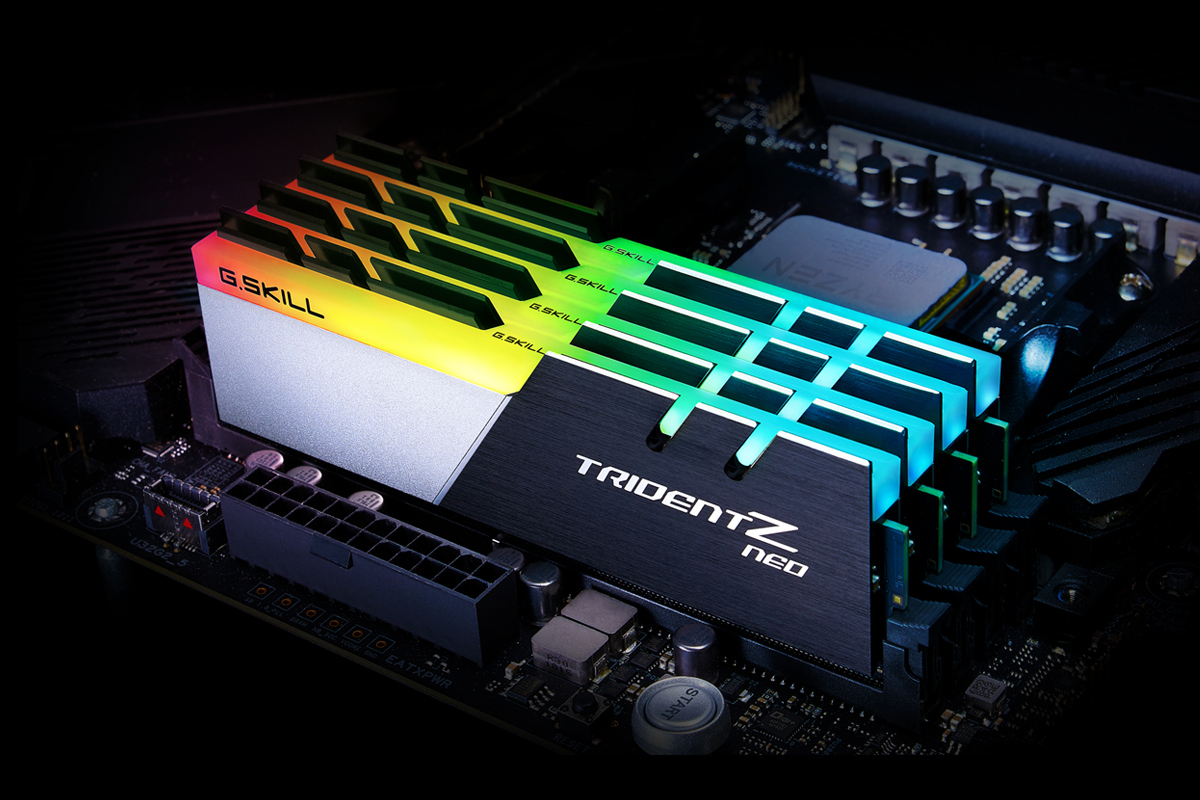Introduction
Welcome to the world of graphics processing units (GPUs), where visual performance is king. Whether you are a gamer, a designer, or a data analyst, selecting the right GPU is crucial for achieving the best possible experience on your computer.
With advancements in technology, GPUs have become more powerful and versatile, allowing for seamless multitasking and high-resolution graphics. However, with numerous options available in the market, the process of buying a GPU can be overwhelming.
In this article, we will guide you through the essential steps to purchase a GPU that suits your requirements, fits your budget, and delivers the best performance. From researching the different options to evaluating compatibility and power requirements, we will cover everything you need to know to make an informed decision.
So, whether you are a gaming enthusiast seeking to upgrade your rig, an aspiring graphic designer looking to enhance your artistic capabilities, or a data professional searching for efficient processing power, let’s dive into the world of GPU buying and embark on a journey to find your perfect graphics solution.
Researching your options
When it comes to buying a GPU, a crucial step is conducting thorough research to explore the available options. With different brands, models, and specifications to consider, it’s essential to understand the market and make an informed decision.
Start by researching the latest GPUs in the market. Visit the websites of major GPU manufacturers such as NVIDIA and AMD, and explore their product lines. Look for reviews and benchmarks to understand the performance and capabilities of different models.
Additionally, visit technology forums and discussion boards to gain insights from experienced users. Engage in conversations and ask for recommendations based on your specific needs. Join online communities dedicated to gaming or graphic design, as these platforms can provide valuable information and real-world experiences.
Consider the type of tasks you need the GPU for. Are you primarily a gamer, or do you also engage in graphic design or video editing? Different GPUs excel in different areas, so understanding your requirements will help you narrow down your options.
Another important aspect to research is driver support. Ensure that the GPU you choose has adequate driver support from the manufacturer. Regular driver updates are crucial for optimized performance and compatibility with the latest software and games.
Price is also a significant factor in your research. Determine your budget and look for GPUs that fall within that range. Keep in mind that the latest and most powerful models tend to be more expensive. However, if you don’t require cutting-edge performance, you can find budget-friendly options that still deliver great results.
Lastly, consider the future upgradeability of your GPU. Look into the compatibility of the GPU with your current system and check if there are any limitations or requirements, such as the power supply unit (PSU) wattage or the available expansion slots. Planning for future upgrades will save you from potential compatibility issues down the line.
Understanding your needs
Before you can make an informed decision about which GPU to buy, it’s crucial to have a clear understanding of your needs and priorities. Consider the specific tasks you will be performing and the level of performance required to achieve your goals.
If you are a gamer, think about the types of games you play and the desired graphics quality. Do you aim for smooth gameplay at high resolutions and settings? Or are you content with moderate performance and lower graphical fidelity? Understanding your gaming preferences will help you determine the level of GPU horsepower needed.
For graphic designers, video editors, or other creative professionals, consider the software applications you use. Some applications rely heavily on GPU acceleration, such as Adobe Photoshop or Premiere Pro. Research the recommended GPU specifications for your preferred software and ensure that the GPU you choose meets or exceeds those requirements.
Are you planning on using your GPU for machine learning or data analysis? If so, certain GPUs are specifically designed for these tasks, with features like extensive parallel processing capabilities. Understanding the specific requirements of your data processing tasks will guide your GPU selection.
Additionally, consider the future scalability of your needs. Are there any upcoming projects or advancements in your field that may require more demanding GPU performance? Investing in a slightly more powerful GPU now may save you from needing to upgrade sooner.
Finally, consider any special requirements you may have, such as multi-monitor setups or virtual reality (VR) support. Not all GPUs offer the same level of connectivity or compatibility with VR headsets, so be sure to choose one that meets your needs.
By understanding your needs and priorities, you can narrow down your options and focus on GPUs that align with your specific use cases. This ensures that you invest in a GPU that provides the performance and features necessary to enhance your computing experience.
Identifying your budget
One of the most important factors to consider when purchasing a GPU is your budget. Identifying your budget upfront will help you narrow down your options and find the best GPU that meets your needs without breaking the bank.
Start by determining how much you are willing to spend on a GPU. Consider your overall budget for your computer upgrade or build, and allocate a portion of that budget specifically for the GPU. This will give you a clear understanding of how much you can afford to invest.
Keep in mind that the price range for GPUs can vary significantly, depending on the specifications and brand. High-end GPUs with the latest technology typically come with a higher price tag, while budget-friendly options offer more affordable alternatives. Find a balance between your desired performance and your budget constraints.
Consider the longevity of your budget as well. Are you willing to spend more now to future-proof your system? Or is your budget limited and you’re looking for the best value within your price range? Understanding your expectations for long-term usage and your willingness to upgrade in the future will help you determine your budget threshold.
Research the prices of different GPUs and compare them across various retailers. Look for promotions, discounts, or bundle deals that may help you get more value for your money. Additionally, consider purchasing from trusted online retailers or local stores that offer warranties and customer support for added peace of mind.
Remember that while the GPU is a crucial component for graphics-intensive tasks, it’s just one part of the overall system. Avoid overspending on the GPU and neglecting other essential components, such as the CPU, RAM, and storage, which also contribute to overall system performance.
By identifying and setting a realistic budget for your GPU purchase, you can make a well-informed decision that balances your performance needs with your financial limitations. This ensures that you get the best value for your money while enjoying a seamless and enjoyable computing experience.
Compatibility check
Before finalizing your GPU purchase, it’s essential to conduct a thorough compatibility check to ensure that the GPU will work seamlessly with your existing system.
Start by examining the physical dimensions of the GPU and compare them with the available space in your computer case. Some GPUs are larger and may require a spacious case or even a specific form factor, such as mini or compact GPUs for small form factor builds.
Next, consider the power requirements of the GPU. Check the recommended power supply unit (PSU) wattage for the GPU and make sure your PSU can handle the load. Insufficient power supply can lead to stability issues and underperformance of the GPU. It’s also essential to check if your PSU has the necessary connectors, such as PCIe power connectors, to provide power to the GPU.
Compatibility extends beyond physical dimensions and power requirements. You also need to ensure that the GPU is compatible with your motherboard and its PCIe slot. Check the specifications of your motherboard for the type and version of PCIe slot it has, such as PCIe 3.0 or PCIe 4.0. Ensure that the GPU you choose is compatible with the available slot on your motherboard.
Another aspect of compatibility to consider is the compatibility of the GPU with your operating system. Ensure that the GPU has driver support for your operating system, as outdated or incompatible drivers can lead to instability or functional limitations.
If you have multiple GPUs or plan to use more than one GPU, ensure that your motherboard supports multi-GPU setups, such as SLI (Scalable Link Interface) or CrossFire, and that the GPUs are compatible with each other. Not all GPUs or motherboards support multi-GPU configurations, so it’s crucial to verify compatibility in advance.
Lastly, consider the connectivity options of the GPU. Check if it has the desired number and type of display outputs, such as HDMI, DisplayPort, or DVI, to connect your monitors or other display devices.
By performing a comprehensive compatibility check, you can avoid compatibility issues and ensure that your chosen GPU seamlessly integrates with your existing system. This enables you to fully harness the power and capabilities of the GPU without any setbacks or limitations.
Comparing performance
When buying a GPU, comparing performance across different models is crucial to ensure you get the best performance for your specific needs. By examining various performance metrics, you can make an informed decision and select a GPU that offers the desired level of performance.
One of the key performance indicators is the GPU’s core count. GPUs with higher core counts generally offer better performance in demanding tasks such as gaming or graphic design. However, it’s essential to note that performance is not solely determined by core count and other factors, such as architecture and clock speeds, also influence performance.
Clock speeds, both base and boost clocks, are another crucial metric to consider. Higher clock speeds generally result in faster rendering and processing times. Don’t forget to compare these clock speeds across different GPUs to identify the ones that offer the best performance within your budget.
Memory is also an important performance aspect. GPUs come with dedicated video memory, known as VRAM. The amount of VRAM determines how much data the GPU can store and process, impacting performance in graphics-intensive tasks. For gaming or resource-heavy applications, consider GPUs with higher VRAM capacities to prevent performance bottlenecks.
Benchmark tests are a reliable way to compare the performance of different GPUs. Look for independent benchmark results that measure the real-world performance of GPUs in tasks relevant to your usage. Popular benchmarking tools such as 3DMark or Unigine Heaven can provide valuable insights into GPU performance across different scenarios.
Don’t forget to consider the specific performance requirements of the software or games you plan to use. Some software applications or games may have specific GPU recommendations or requirements, so check their documentation or system requirements to determine if a particular GPU can handle them optimally.
While comparing performance, it’s also crucial to consider power consumption. GPUs with higher performance often require more power, and this can impact your overall system’s power requirements and electricity bills. Ensure that your PSU can handle the power demand of the chosen GPU and that it fits within your desired power consumption limits.
Remember that performance requirements can vary depending on your specific needs and usage scenarios. A GPU that offers top-tier performance in gaming may not be necessary for less demanding tasks. Assess your requirements and strike a balance between performance, budget, and future upgradability to make the best decision.
Determining the right brand
Choosing the right brand for your GPU is an important decision that can impact the overall performance, reliability, and support of your graphics solution. There are several reputable GPU brands in the market, each offering their own unique features, technologies, and customer support.
One of the most well-known GPU brands is NVIDIA. NVIDIA GPUs are widely recognized for their powerful performance, advanced features, and extensive driver support. They offer a range of models to suit various budgets and use cases, making them a popular choice among gamers, graphic designers, and professionals requiring high-performance GPUs.
AMD is another prominent player in the GPU market. AMD GPUs are known for their competitive performance, value for money, and support for open-source technologies. They provide a compelling alternative for those seeking affordability without compromising on performance.
Both NVIDIA and AMD have their own software ecosystems, with NVIDIA’s GeForce Experience and AMD’s Radeon Software. These software packages provide features such as driver updates, game optimization, and performance monitoring. Consider the features and user experience offered by these software suites when deciding on a brand.
In addition to NVIDIA and AMD, there are other reputable brands such as ASUS, MSI, Gigabyte, and EVGA. These brands often offer custom designs, enhanced cooling solutions, and overclocked variants of GPUs. They may also provide better customer support and warranty options compared to the reference models.
When determining the right brand, consider factors such as customer reviews, brand reputation, warranty coverage, and after-sales support. Research the user experiences and feedback regarding each brand’s reliability, build quality, and customer service. This will give you a better understanding of the overall brand experience.
It’s also worth considering the brand compatibility with other components in your system. Some brands may have better compatibility or optimizations with certain motherboards, CPUs, or software applications.
Ultimately, the right brand for your GPU will depend on your specific needs, budget, and personal preferences. Take the time to research the different brands, compare their offerings, and read reviews from reliable sources. Finding the brand that aligns with your requirements and offers the best value for your money will help ensure a smooth and satisfactory GPU experience.
Considering power requirements
Before purchasing a GPU, it’s crucial to consider its power requirements to ensure compatibility with your system and prevent any potential issues. Understanding the power requirements of a GPU will help you determine if your power supply can handle its demands and avoid any stability or performance problems.
Start by checking the GPU manufacturer’s specifications for the recommended power supply unit (PSU) wattage. This information is typically provided on the GPU’s product page or in the user manual. Ensure that your power supply has the required wattage to support the GPU’s power consumption.
In addition to the overall wattage, also consider the number and type of power connectors needed for the GPU. Most modern GPUs require PCIe power connectors to supply additional power. Check your power supply to ensure that it has the necessary PCIe power connectors available. If not, you may need to consider upgrading your power supply.
It’s important to note that while the GPU itself may have power requirements, your overall system’s power consumption must also be taken into account. Consider the power requirements of other components such as the CPU, motherboard, storage devices, and any additional peripherals. Ensure that your power supply can handle the combined power draw of all components.
High-end GPUs typically have higher power requirements due to their increased performance and additional features. If you are considering a high-end GPU, make sure your power supply has sufficient wattage and the necessary PCIe power connectors to support it.
Efficiency is another aspect to consider. Look for power supplies that offer high efficiency ratings, such as 80 Plus Bronze, Silver, Gold, or Platinum. Higher efficiency power supplies convert more of the electricity they draw from the wall into usable power, reducing energy waste and operating costs.
It’s important to have some headroom when it comes to power supply wattage. Choose a power supply that has a higher wattage than the GPU’s recommended requirement. This not only allows for smoother power delivery but also accommodates any future upgrades or additions to your system that may require more power.
When it comes to power requirements, it’s crucial to prioritize quality and reliability. Invest in a reputable power supply brand with good reviews and a proven track record for stable power delivery. A high-quality power supply will ensure that your GPU and other components receive a consistent and clean power supply, minimizing the risk of performance issues or hardware failures.
By considering the power requirements of your GPU and choosing a reliable power supply that can meet those requirements, you can ensure a stable and efficient power supply to your system. This will allow your GPU to perform optimally and avoid any potential power-related problems.
Looking for deals
When buying a GPU, it’s always a smart move to keep an eye out for deals and discounts. By finding a good deal, you can save money and potentially get a higher-performing GPU within your budget. Here are some strategies to help you find the best deals:
1. Explore online retailers: Visit reputable online retailers such as Amazon, Newegg, or Best Buy to check for discounts, flash sales, or bundle deals. These retailers often offer competitive pricing and special promotions on GPUs.
2. Subscribe to newsletters: Sign up for newsletters and email subscriptions from retailers or manufacturers. This way, you will receive notifications about upcoming sales, promotions, or exclusive deals on GPUs.
3. Check manufacturer websites: Visit the official websites of GPU manufacturers such as NVIDIA and AMD. They sometimes offer direct sales or special discounts on their products. By purchasing directly from the manufacturer, you may access exclusive deals or bundles.
4. Utilize price comparison websites: Take advantage of price comparison websites or platforms that aggregate prices from different retailers. This allows you to compare prices across multiple sources and find the best deal.
5. Follow social media and forums: Stay updated on social media platforms like Twitter, Facebook, or Reddit, as well as technology forums or gaming communities. Retailers often announce deals or discounts on these platforms, and community members may share relevant information.
6. Consider refurbished or open-box options: Refurbished or open-box GPU options can often provide significant savings. These products typically undergo extensive testing and come with a warranty. It’s important to research the seller’s reputation and thoroughly read the product description to understand the condition and warranty details.
7. Timing is important: Keep an eye on holiday sales, such as Black Friday, Cyber Monday, or major shopping events. These periods often bring substantial discounts on electronic products, including GPUs. Additionally, new GPU releases may lead to price drops on older models.
8. Bundles and game promotions: Some retailers offer GPU bundles that include additional components, such as games, gaming accessories, or software. These bundles can provide added value and savings, especially if you were planning on purchasing those items separately.
9. Consider local retailers: Don’t overlook local computer hardware stores, as they may offer competitive prices and personalized service. They may also have clearance sales or ongoing deals that are not available online.
Remember to compare prices, read customer reviews, and consider the reputation of the retailer before making a purchase. Always ensure that you’re buying from trusted sources to avoid counterfeit or unreliable products.
By keeping these strategies in mind and actively searching for deals, you can maximize your budget and find the best possible price for your desired GPU. It may require some patience and research, but the savings you gain will be worth it in the end.
Buying from trusted sources
When purchasing a GPU, it’s crucial to buy from trusted sources to ensure the authenticity, reliability, and support for your graphics card. Here are some key considerations to keep in mind when choosing the right place to buy your GPU:
1. Authorized retailers and manufacturers: It’s always recommended to buy from authorized retailers or directly from manufacturers themselves. These channels provide assurance that you are purchasing genuine products with valid warranties and customer support. Check the manufacturer’s official website to find a list of authorized sellers.
2. Reputable online retailers: Established online retailers like Amazon, Newegg, and Best Buy have a reputation for quality and reliability. They have processes in place to ensure the authenticity of products and often provide customer reviews and ratings to assist with your decision-making process.
3. Local computer hardware stores: Support local businesses by considering purchasing from trusted and reputable computer hardware stores in your area. These stores often have knowledgeable staff who can provide personalized recommendations and assistance.
4. Avoid unauthorized third-party sellers: When purchasing online, be cautious about third-party sellers on platforms like eBay or Craigslist, especially if the price seems too good to be true. Unauthorized sellers may sell counterfeit or refurbished products without proper warranties, leading to potential issues and lack of support.
5. Research customer reviews and ratings: Before making a purchase, take the time to read customer reviews and ratings from verified buyers. This can give you insights into the overall user experience and the reliability of the seller.
6. Check return policies and warranties: Ensure that the seller has clear return policies and offers a warranty on the GPU. A reputable seller will provide coverage against any defects or issues that may arise within a reasonable period of time after purchase.
7. Verify security and data protection: When making your purchase, confirm that the website or platform offers secure payment options and data protection measures. Look for indications such as SSL encryption, secure checkout processes, and trusted payment gateways.
8. Manufacturer and seller customer support: Consider the level of customer support provided by the manufacturer and the seller. Check if they have easily accessible customer service channels and responsive support teams that can assist you with any inquiries or concerns.
9. Check for product authenticity: After receiving your GPU, check for signs of authenticity, such as proper branding, holographic labels, and matching serial numbers. If you suspect that you have received a counterfeit product, contact the seller or manufacturer immediately.
By buying from trusted sources, you can have peace of mind knowing that you are receiving a genuine product with reliable customer support. This ensures that your GPU performs as expected and that you have access to assistance should any issues arise.
Conclusion
Choosing the right GPU for your needs requires careful consideration of various factors, from researching your options to understanding your specific requirements. By following the steps outlined in this guide, you can make an informed decision and find a GPU that meets your budget and performance expectations.
Start by conducting thorough research on the available options, considering factors such as brand reputation, performance benchmarks, and driver support. Understand your needs and prioritize the tasks you will be performing. Take into account the power requirements and compatibility of the GPU with your existing system.
Identifying your budget and looking for deals can help you find the best value for your money. Consider trustworthy sources and authorized retailers to ensure the authenticity and reliability of your purchase. Look for warranties and customer support from both the manufacturer and the seller.
Remember to compare performance metrics, such as core counts, clock speeds, and memory capacity, to find the GPU that offers the performance level you desire. Consider your specific usage scenarios and future scalability needs.
Once you have selected and purchased your GPU, ensure proper installation, including connecting power cables and installing the latest drivers. Regularly update your GPU drivers to maintain optimal performance and compatibility with the latest software and games.
By following these steps and considerations, you can confidently purchase a GPU that enhances your computing experience, whether it’s for gaming, graphic design, data analysis, or any other demanding tasks. Take the time to research, compare, and make an informed decision to ensure a smooth and enjoyable GPU experience.







